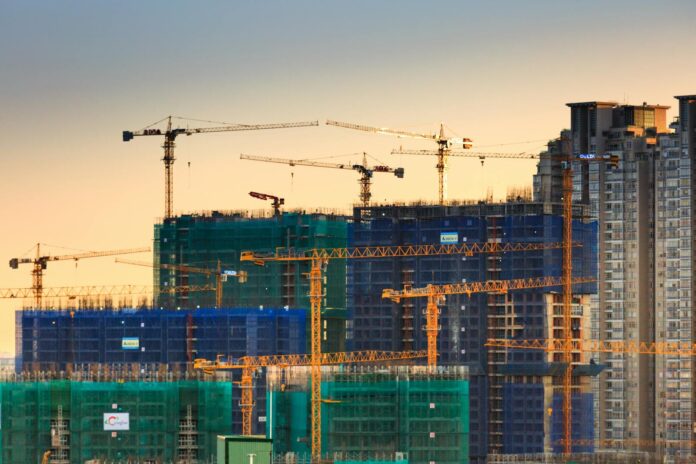As the world becomes increasingly aware of the challenges posed by climate change, sustainable building materials are beginning to play a key role in the future of the construction industry. Sustainable materials are those that are produced in an environmentally friendly way, have a low impact on resources, and are energy-efficient. The introduction of such materials can not only reduce greenhouse gas emissions but also decrease waste and the consumption of natural resources. Many construction companies are beginning to recognize the benefits of using sustainable materials, which could lead to a revolution in the way we build our homes and other structures. It is worth noting that sustainable building materials can include a variety of resources, such as wood, plant-based materials, and recycled waste. Therefore, investing in sustainable development is becoming a necessity, not just a popular slogan.
The importance of sustainable development in construction
The concept of sustainable development in construction is not a new trend. Over the past few decades, architects and engineers have become increasingly aware of the negative environmental impact of traditional building materials. The use of steel, concrete, and other raw materials is often associated with high energy consumption and pollution. This has created a need to seek alternatives that not only reduce environmental impact but are also more economical in the long term. Sustainable materials can improve residents’ quality of life by creating healthier and more comfortable spaces. For example, natural materials such as wood or clay not only provide good insulation but also help regulate air humidity, which has a positive effect on human health. It is also important to emphasize that buildings made from sustainable materials may have a longer lifespan, which ultimately leads to lower maintenance costs.
Types of sustainable materials and their applications
Sustainable materials can be grouped into several key categories that are used in construction. The most popular include:
-
Wood – one of the oldest building materials, with excellent insulating properties and biodegradability.
-
Composite materials – made from recycled raw materials such as plastic or metal, offering high durability with low weight.
-
Plant fibers – increasingly used as eco-friendly insulation, providing good thermal performance and being environmentally friendly.
-
Green concrete – modern technologies allow for the production of concrete with recycled components, reducing its environmental impact.
Each of these materials has its own unique properties and applications that can help reduce the carbon footprint in construction. It is also worth noting that many of these resources can be sourced locally, further reducing the greenhouse gas emissions associated with transportation. Examples of sustainable material use can be found in many building projects that have been recognized for their innovative approach to environmental design. Such developments serve as inspiration for other investors and architects seeking efficient solutions.
Benefits of using sustainable materials in construction
The use of sustainable building materials offers numerous benefits that impact the environment, human health, and the economy. Here are a few key aspects to consider:
-
CO2 reduction – by using materials with a low environmental impact, carbon dioxide emissions can be significantly reduced.
-
Energy savings – many sustainable materials have better insulating properties, leading to lower heating costs.
-
Improved indoor air quality – natural materials like wood improve indoor air quality, positively affecting residents’ health.
-
Increased property value – buildings made with sustainable materials often attract more buyers, potentially raising market value.
It is also important to mention technological innovations that support the development of sustainable construction. Modern technologies such as 3D printing allow for the creation of more complex and efficient structures, increasing the possibilities for using sustainable materials. This approach can significantly reduce raw material usage and the time needed to complete construction projects.
Challenges of implementing sustainable materials
Despite their many advantages, the implementation of sustainable materials in construction faces several challenges. First and foremost, initial costs can be higher compared to traditional materials. Many companies worry that investments in sustainable resources may not yield the expected return in the short term. In addition, the lack of appropriate legal regulations and standards can hinder their widespread use. Many people are also unaware of the benefits of using sustainable materials, which may delay their adoption.
To overcome these barriers, increasing education and promoting sustainable construction are essential. Supporting innovation and research into new materials can bring long-term benefits to the construction industry. Organizations involved in certifying green buildings, such as LEED, help promote the idea of sustainable development.
The future of sustainable materials in construction
The future of sustainable materials in construction looks promising. As more people recognize the need to protect the environment, sustainable materials are becoming increasingly popular. Many countries are introducing regulations aimed at promoting energy efficiency and sustainable development in construction. Growing public awareness and a focus on technological innovation can significantly accelerate the adoption of sustainable materials. As a result, the construction industry has a chance to transform in a way that contributes to the sustainable development of society as a whole.
It’s also worth noting that sustainable materials can influence the aesthetics of buildings. More and more architects are choosing to use natural materials, allowing for the creation of beautiful and functional spaces.
To sum up, sustainable materials have the potential to define the future of construction. Change in this industry is inevitable, and its success will depend on the cooperation of many stakeholders, including architects, engineers, investors, and society. Joint action in support of sustainable development is the key to creating a better future for all of us. We encourage you to stay up to date with trends in this field and to actively seek out solutions that help protect our planet.
